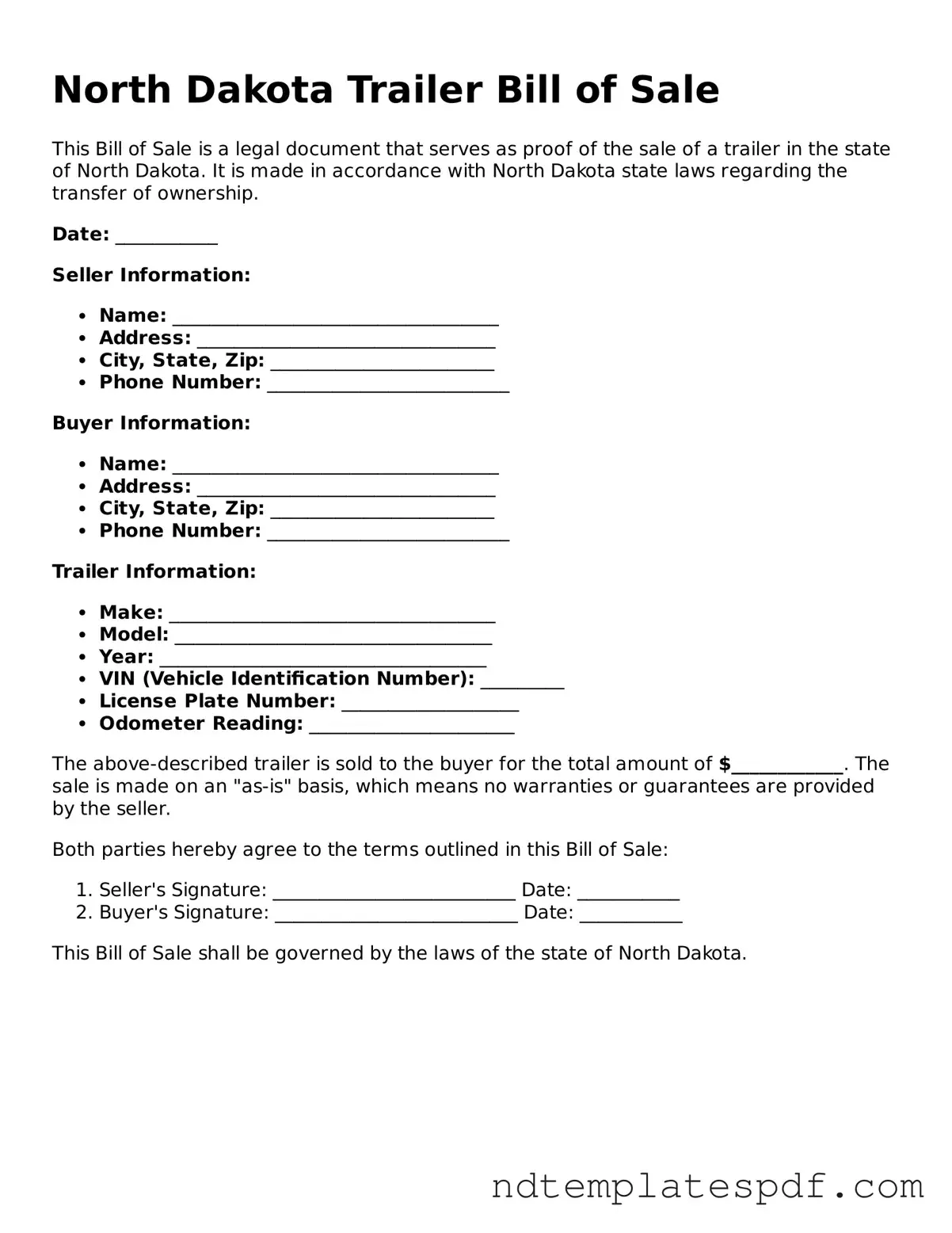Legal North Dakota Trailer Bill of Sale Document
The North Dakota Trailer Bill of Sale form is a legal document that facilitates the transfer of ownership of a trailer from one party to another. This form serves as proof of sale and outlines essential details about the transaction, including the buyer and seller's information, trailer description, and sale price. Utilizing this form helps ensure a smooth transfer process while protecting the interests of both parties involved.
Fill Out Document Now
